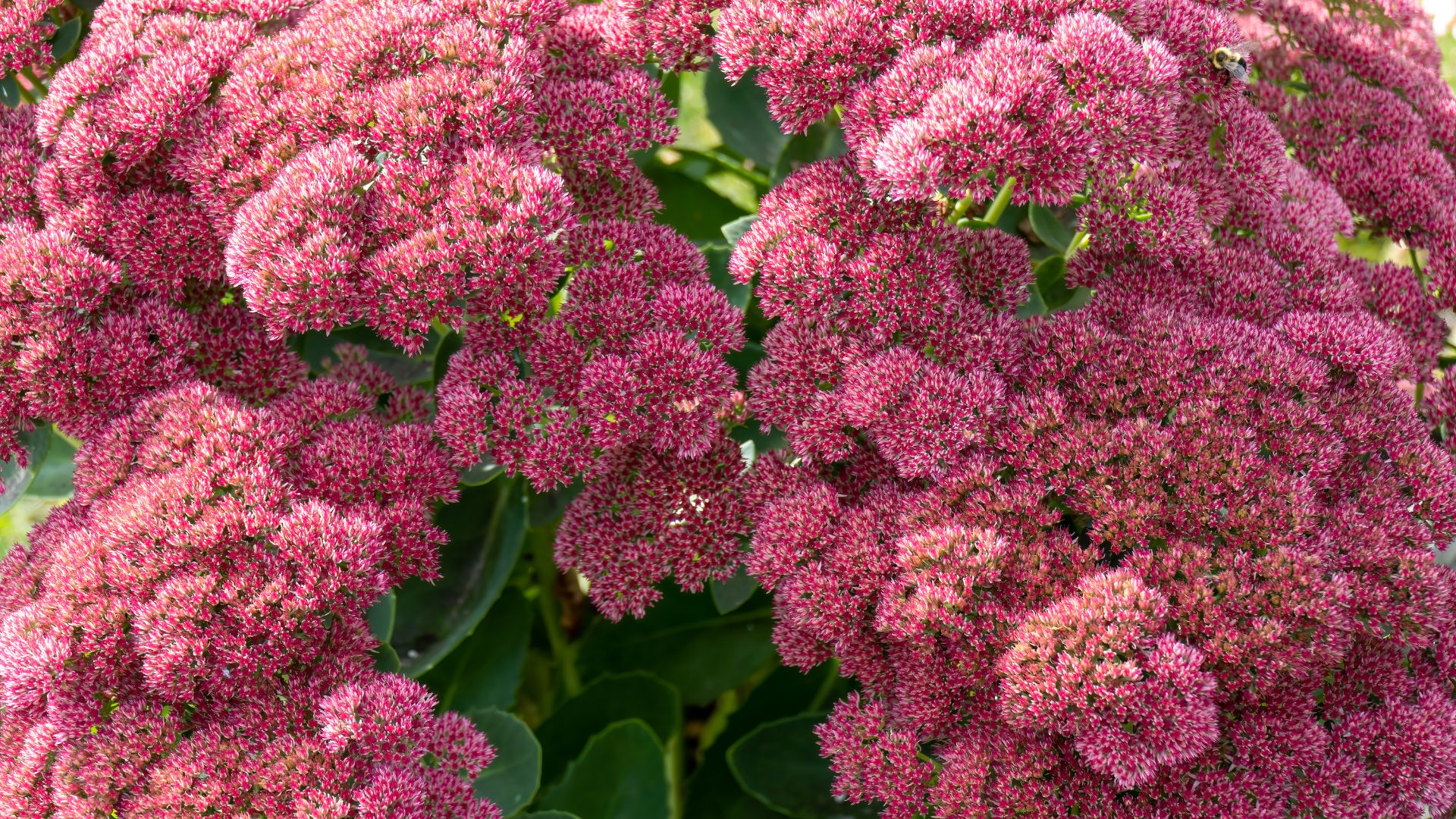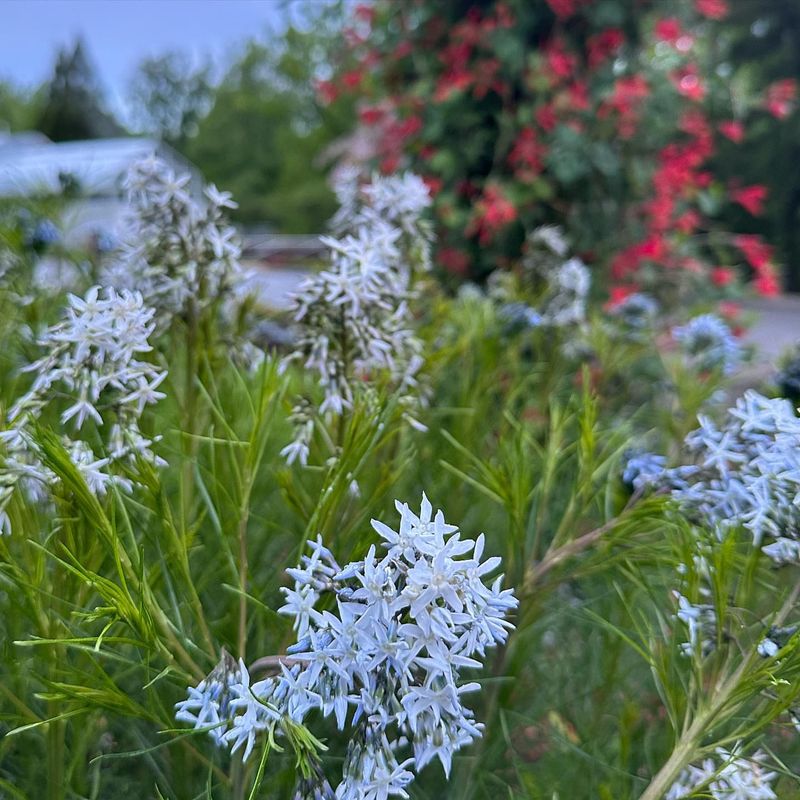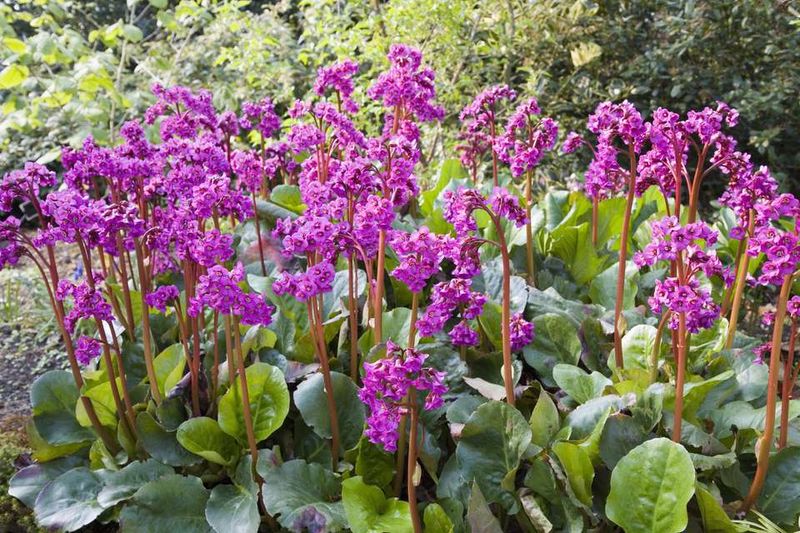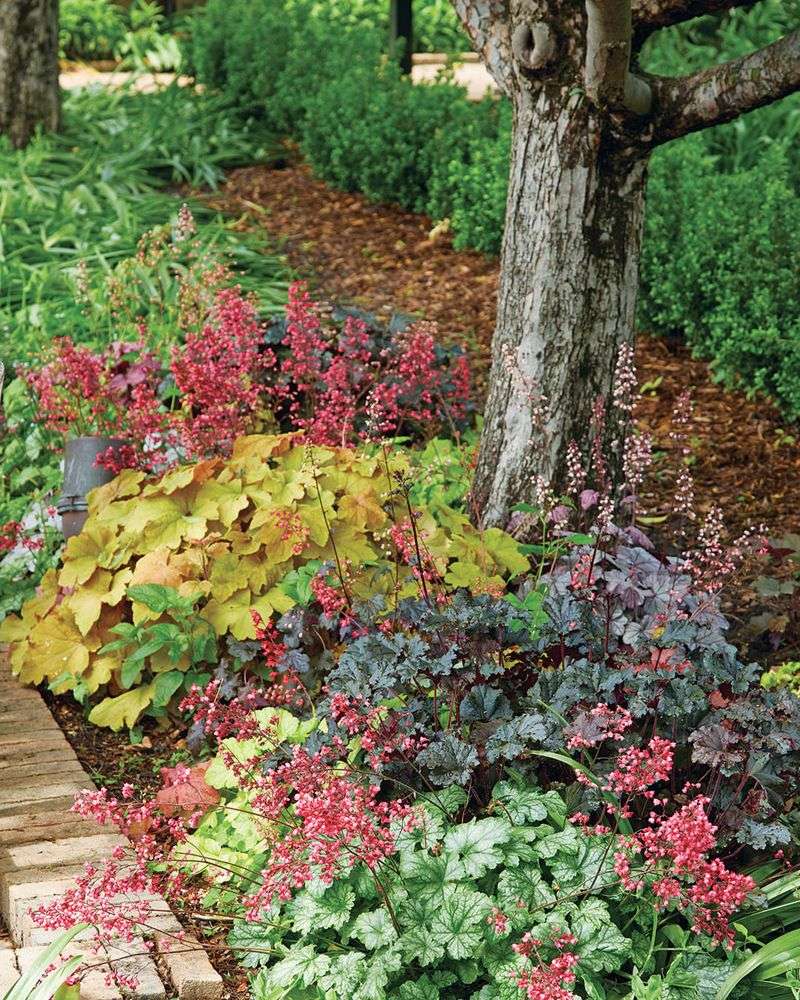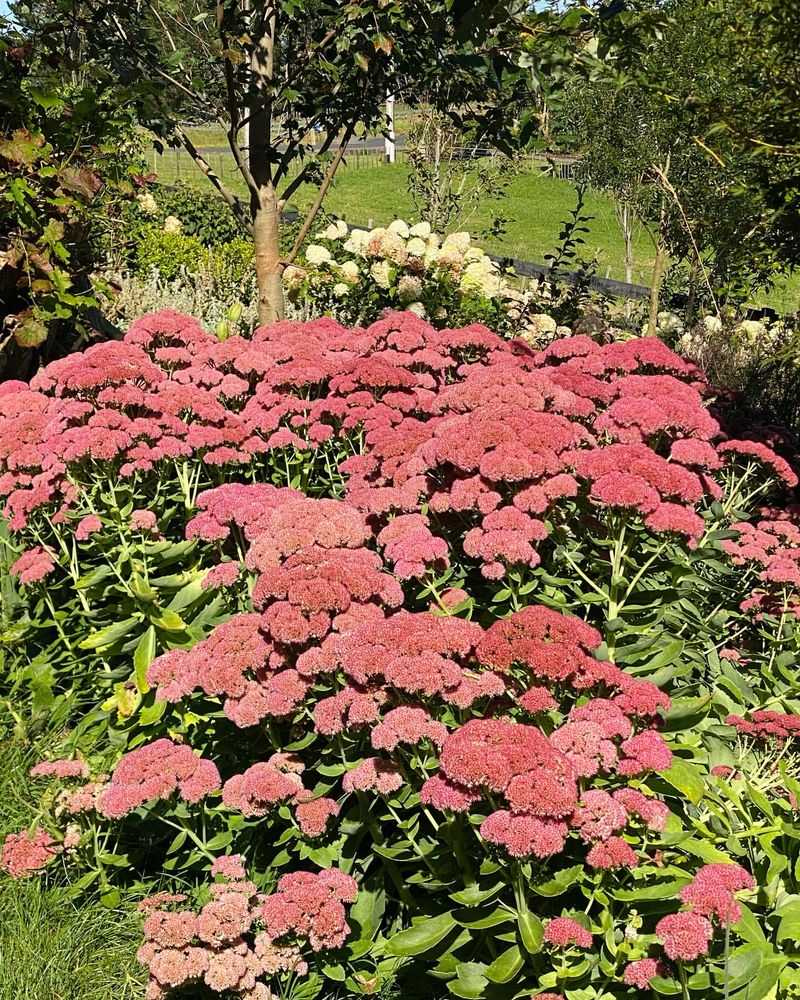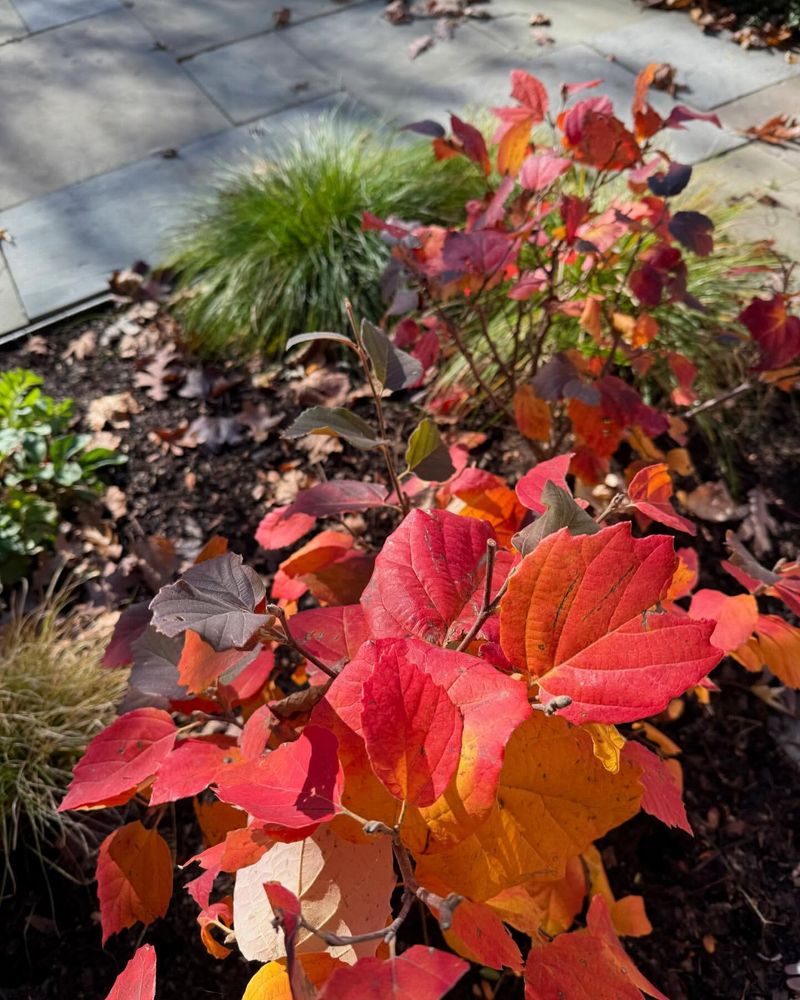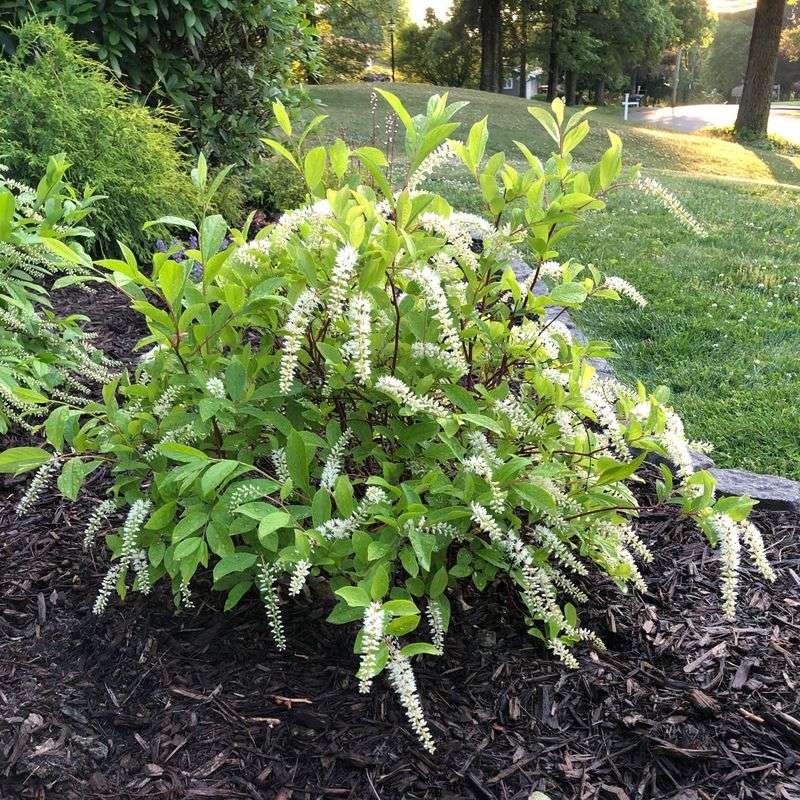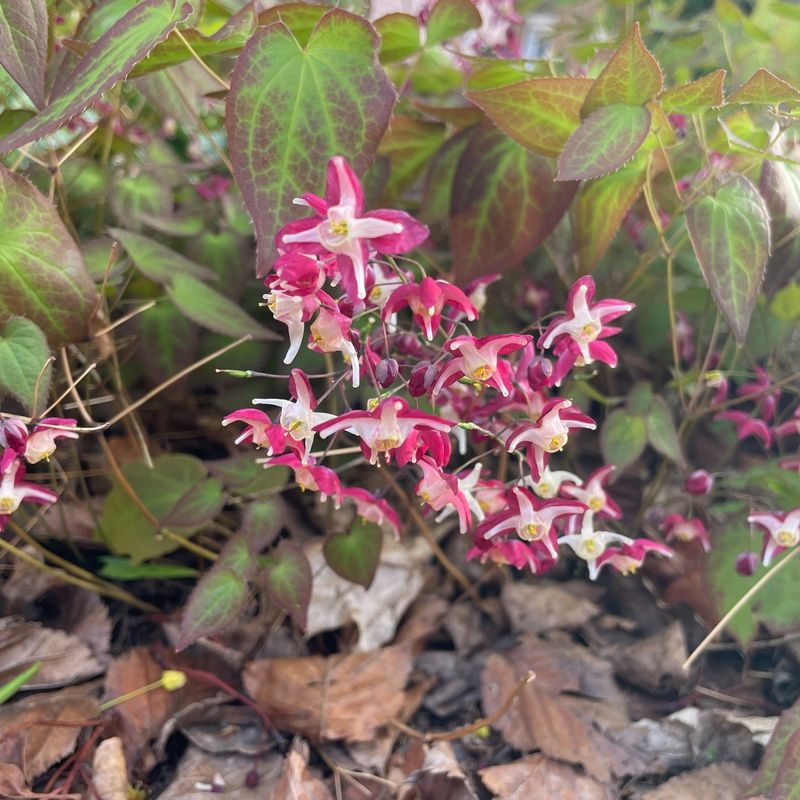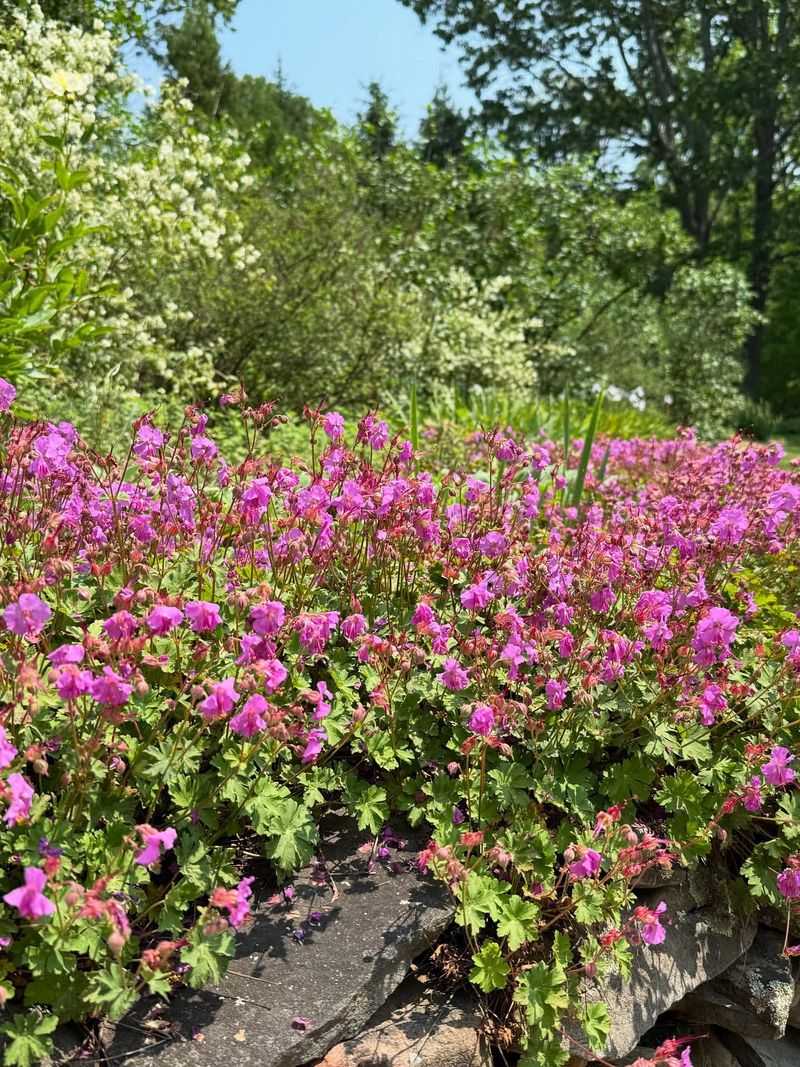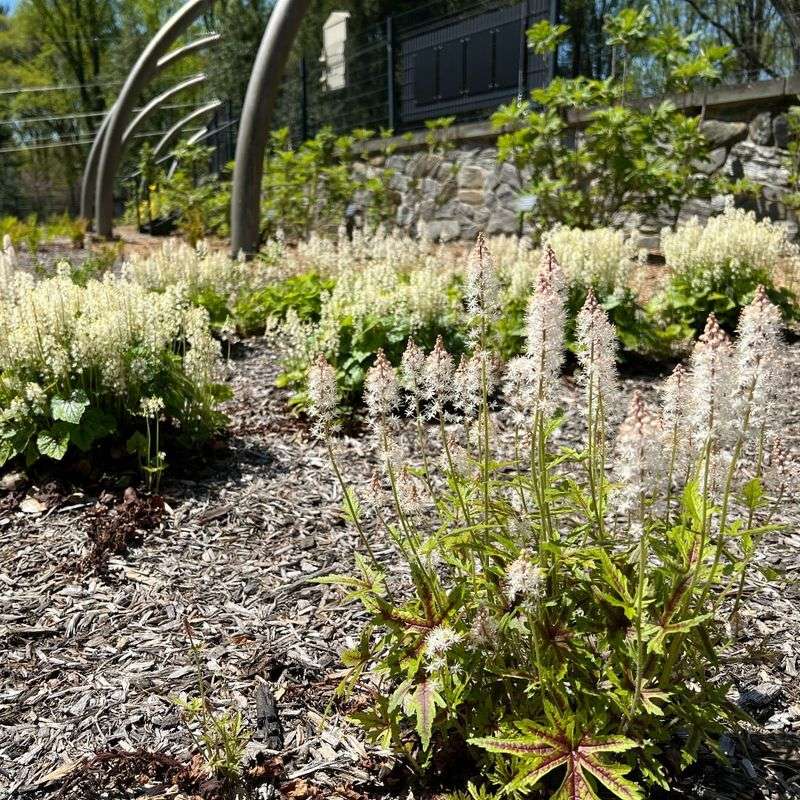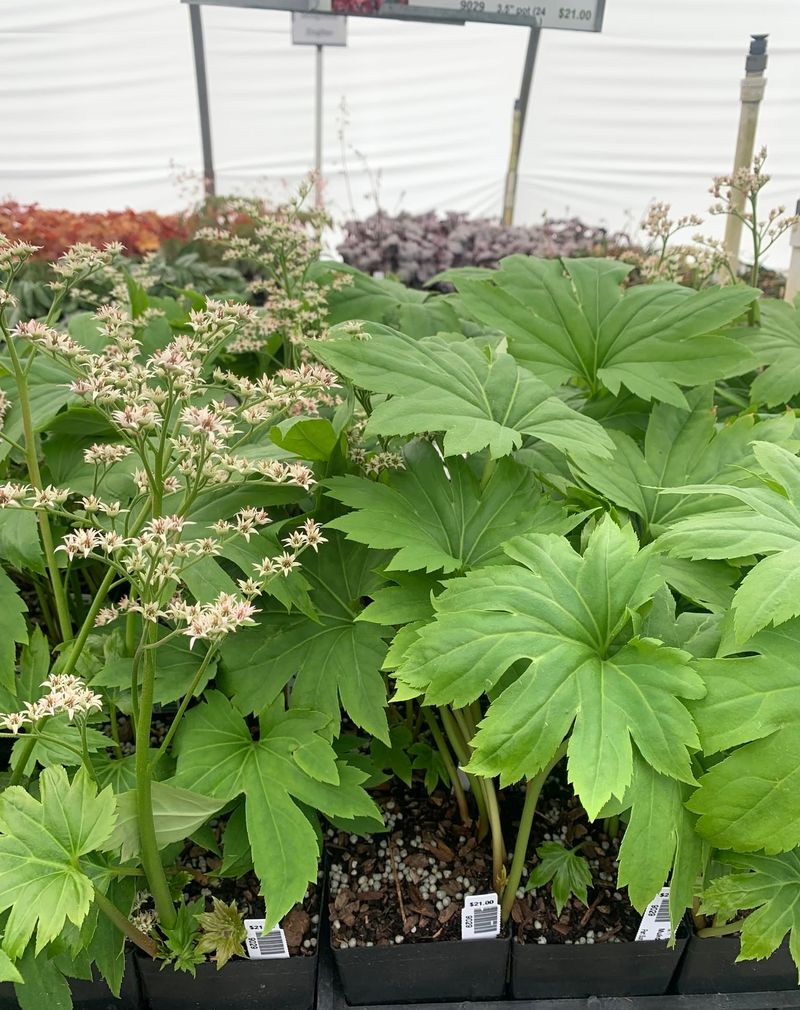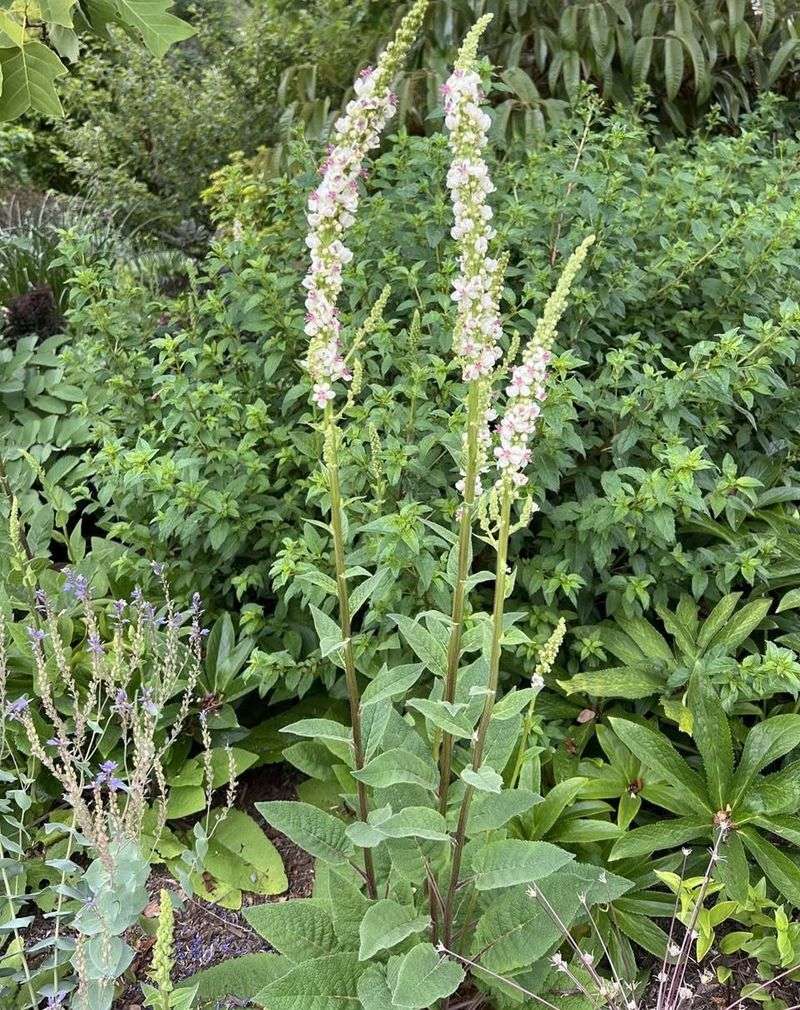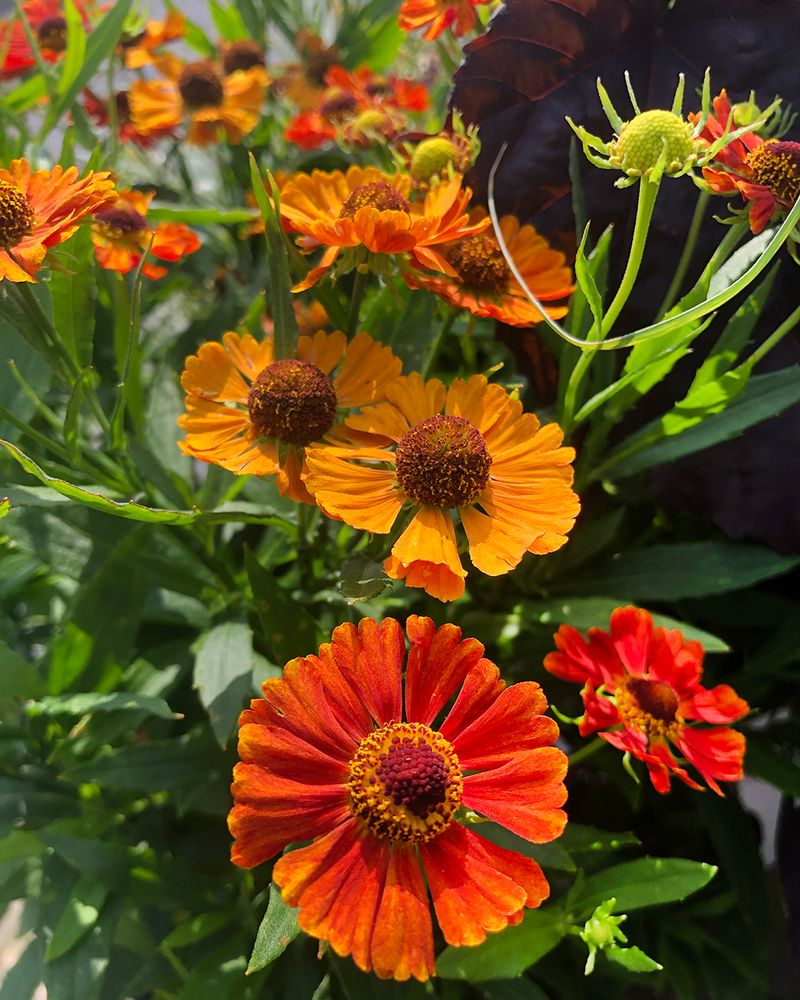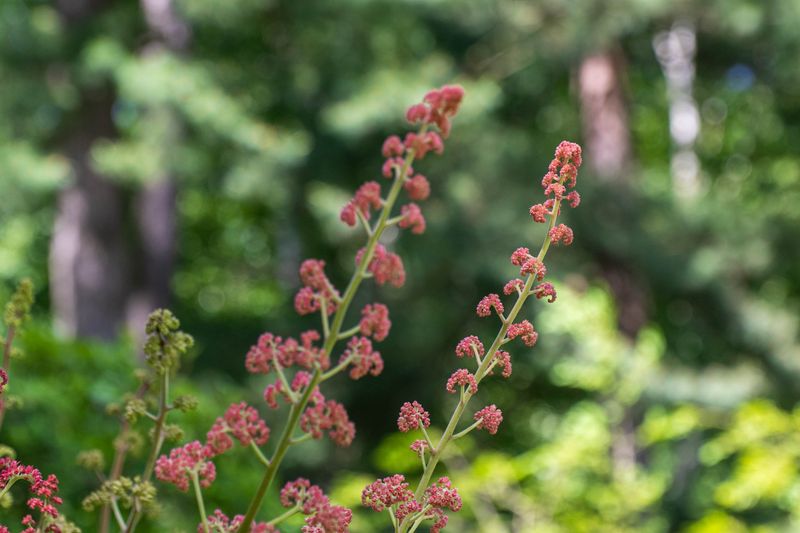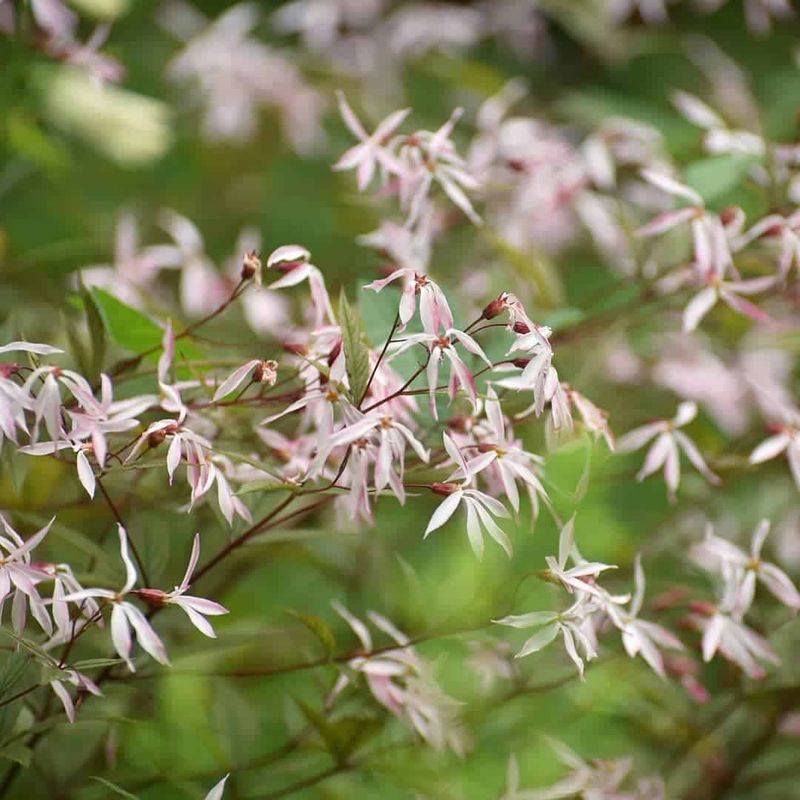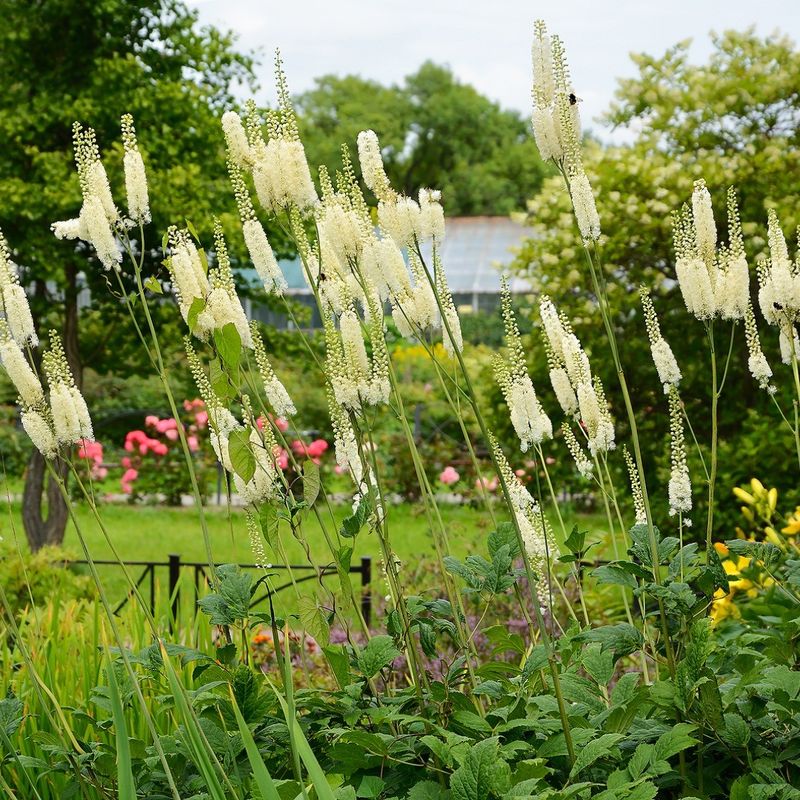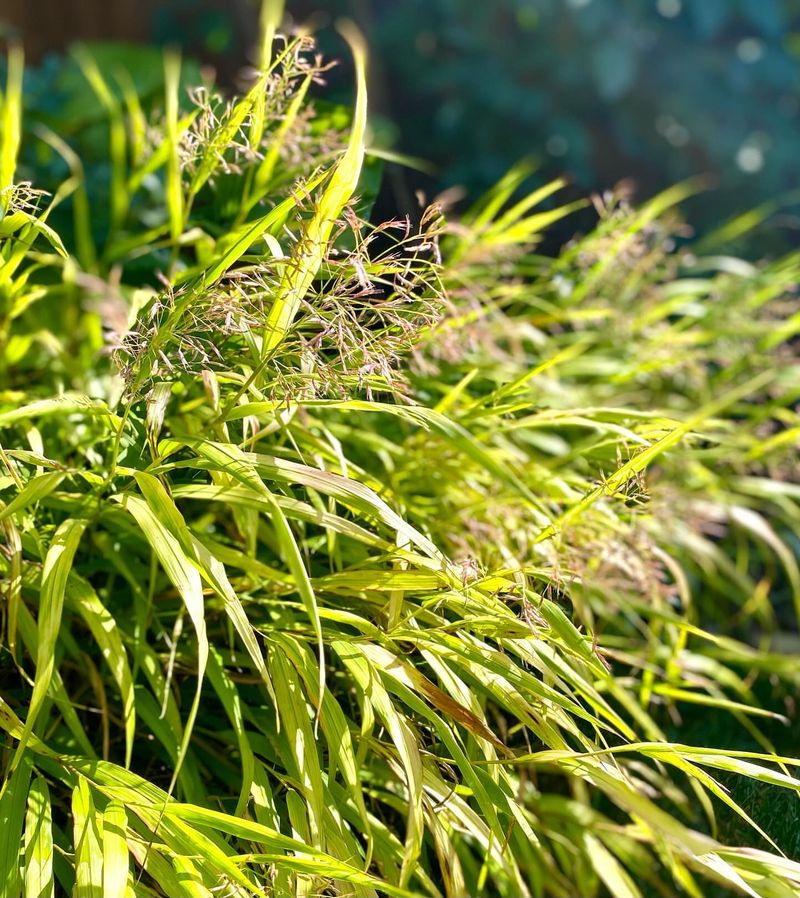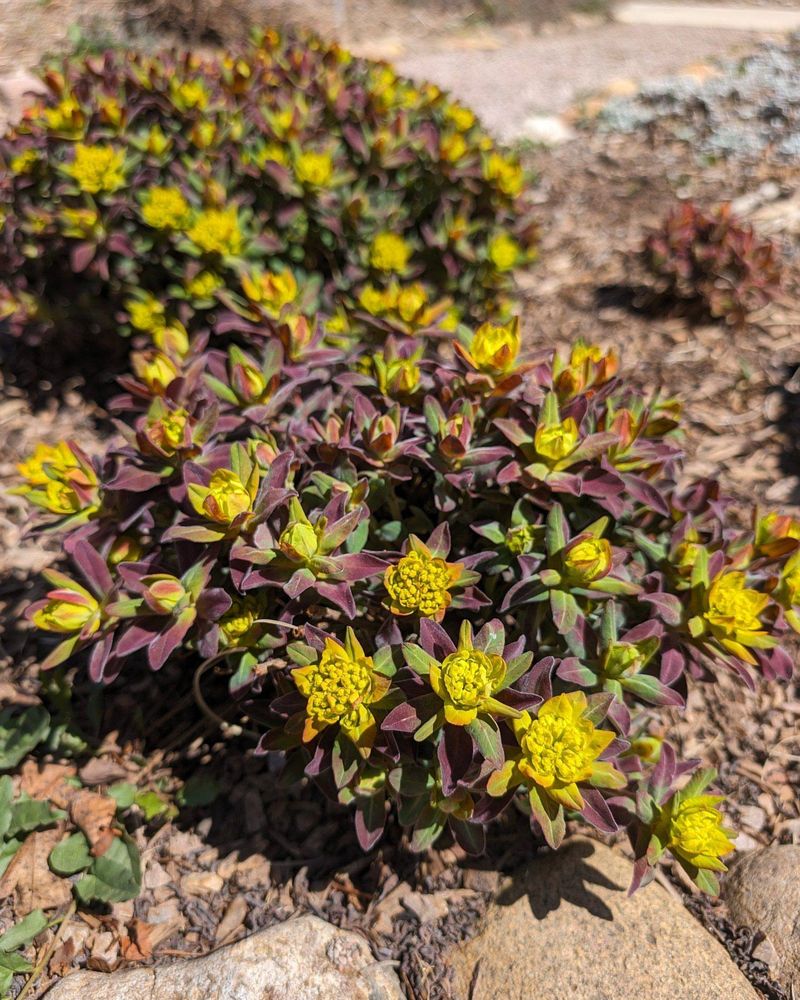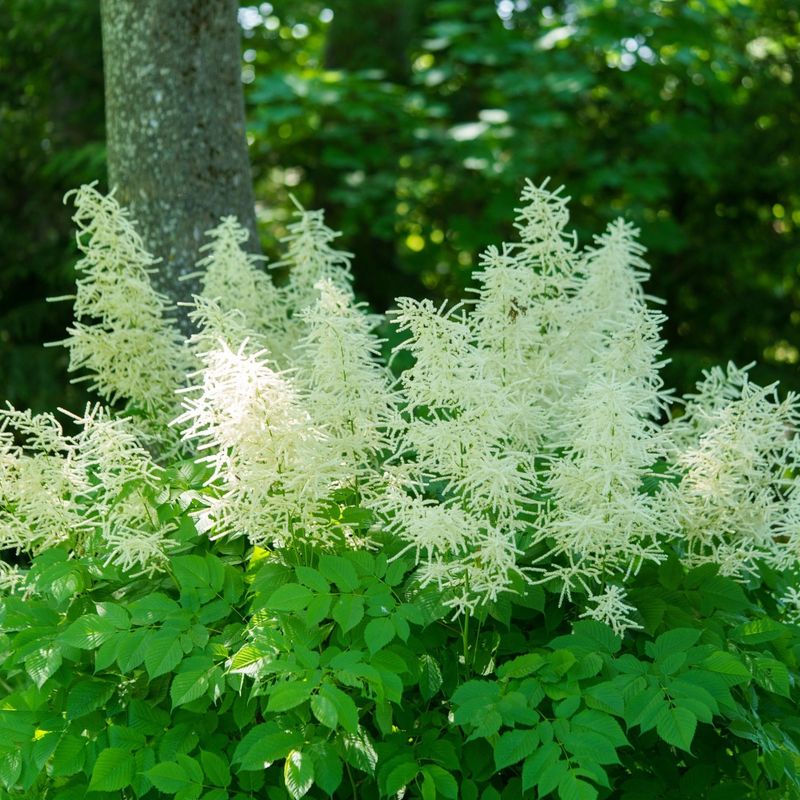Fall in Maine isn’t just about the maples and oaks putting on their spectacular show. Perennials can bring that same fiery magic right to your garden beds, creating pockets of autumn brilliance that last for weeks. As nights grow cooler along our rocky coast, these hardy plants transform into jewel-toned treasures.
I always thought maples stole the show—until I saw how Amsonia lit up my front yard in late October with its golden glow outlasting even the hardiest oak trees. Maine’s short growing season and early frosts might seem limiting, but they actually intensify fall colors in many perennials.
Whether you garden on the windswept coast or in the sheltered inland valleys, these eighteen perennials will bring reliable autumn color year after year, standing strong against our notorious early frosts and coastal winds.
1. Amsonia (Blue Star)
Golden yellow doesn’t begin to describe the sunshine Amsonia brings to fall gardens. After a summer of star-shaped blue flowers, the feathery foliage transforms into a beacon of butter-yellow that seems to glow from within.
My coastal garden plot gets whipped by October winds, but Amsonia stands unfazed, holding its color even after light frosts. Plant it where afternoon sun will backlight those golden leaves for a truly magical effect.
2. Bergenia (Pigsqueak)
Leathery green leaves that transition to deep burgundy and crimson make Bergenia a standout when temperatures drop. The glossy texture adds another dimension as morning frost creates sparkling patterns across each leaf.
Coastal Maine gardeners rejoice—this tough plant laughs at salt spray! My grandmother’s Bergenia patch near Bar Harbor has survived decades of nor’easters. The burgundy color intensifies through winter, providing much-needed color during our long, snowy months.
3. Heuchera (Coral Bells)
Ranging from amber to plum to nearly black, Heuchera varieties offer a painter’s palette for the fall garden. Unlike many perennials that change color with the season, Heuchera maintains its distinctive hues year-round, intensifying as temperatures drop.
Last year, my ‘Caramel’ Heuchera outshone everything else in November when most plants had faded. These tough plants handle Maine’s rocky soil beautifully, creating low mounds of color that persist through early snowfalls.
4. Sedum ‘Autumn Joy’
Rusty red flower heads crown gray-green foliage that shifts to amber and bronze as autumn progresses. The succulent leaves store enough moisture to keep this plant looking fresh even during dry fall spells.
When everything else in my Bangor garden has called it quits, ‘Autumn Joy’ keeps the show going. The seed heads add wonderful texture against early snow, and chickadees visit regularly to pick at the tiny seeds. Hardy to zone 3, it’s perfectly suited for Maine’s challenging climate.
5. Fothergilla (Witch Alder)
Few shrubs can match Fothergilla’s kaleidoscope of fall colors—crimson, orange, yellow, and purple often appear on a single leaf! The compact size makes it perfect for smaller Maine gardens where space is at a premium.
My specimen near Augusta gets better every year, despite our clay soil. What makes this plant special is how the colors hold for weeks rather than days. Even after neighboring maples have dropped their leaves, Fothergilla continues its display well into November.
6. Itea virginica ‘Henry’s Garnet’ (Sweetspire)
Garnet-red doesn’t begin to describe the intense burgundy that develops on this compact shrub. The color starts at the leaf edges in September and gradually spreads inward, creating a striking effect against any backdrop.
Native to eastern woodlands, Sweetspire handles Maine’s dappled shade conditions beautifully. I’ve found it particularly stunning along the edge of pine woods where the dark evergreen backdrop makes those red leaves practically glow. The color often persists until December in protected spots.
7. Epimedium (Barrenwort)
Heart-shaped leaves take on bronze, crimson, and copper tones that seem to float above the ground. This shade-loving ground cover creates a tapestry of color beneath trees where few other plants thrive.
Drought-tolerant once established, Epimedium has saved my woodland garden during our increasingly dry Maine falls. The semi-evergreen foliage often holds its color through December in protected spots.
Some varieties even develop red veining that creates a stained-glass effect when backlit by low autumn sun.
8. Geranium macrorrhizum (Bigroot Geranium)
Aromatic foliage turns brilliant scarlet and orange in fall, creating a carpet of color that persists well into November. The leaves release a spicy scent when touched—nature’s potpourri for the autumn garden.
After five harsh winters in my Rockland garden, this tough plant has proven itself worthy of any Maine landscape.
Unlike many perennials that die back completely, the colorful foliage remains semi-evergreen, providing winter interest under light snow. Its ability to thrive in partial shade makes it invaluable for brightening darker corners.
9. Tiarella (Foamflower)
Maple-like leaves develop dramatic purple-black veining and edges as temperatures drop, creating natural artwork in shady corners. This native woodland plant thrives in the dappled light beneath Maine’s deciduous trees.
Last fall, my Tiarella patch near Camden outperformed plants costing five times as much. The low-growing foliage forms a beautiful groundcover that suppresses weeds while providing three-season interest.
Some varieties develop nearly solid burgundy leaves by late October, creating a rich tapestry in the autumn woodland garden.
10. Mukdenia rossii ‘Crimson Fans’
Maple-shaped leaves develop fiery red edges while the centers remain green, creating a striking two-tone effect. The contrast intensifies as autumn progresses until the entire leaf glows crimson by November.
Despite our frigid winters in western Maine, Mukdenia returns reliably each spring. I’ve found it particularly effective when planted near water features where the red reflects dramatically.
The semi-evergreen foliage often persists under snow cover, revealing its color again during January thaws.
11. Penstemon digitalis ‘Husker Red’
Burgundy-red foliage forms elegant basal rosettes that intensify in color as temperatures drop. The red stems create vertical exclamation points in the autumn garden, especially beautiful when frosted.
After experimenting with dozens of perennials in my windswept York County garden, ‘Husker Red’ has proven remarkably resilient.
The semi-evergreen leaves maintain their color through December in most years. I’ve found this native plant attracts the season’s last butterflies while many other flowers have faded.
12. Helenium (Sneezeweed)
Copper, gold, and russet flowers continue blooming into October, while the foliage develops rich bronze tones. The late-season color makes Helenium invaluable for extending Maine’s garden season.
Despite its unfortunate common name, this plant doesn’t cause sneezing! My Belfast garden relies on these warm tones when most perennials have finished their show.
The seed heads develop a dark chocolate color that persists through early snow, creating striking silhouettes against white. Goldfinches visit regularly to feast on the seeds.
13. Rodgersia
Bold, palm-like leaves transition from green to bronze, copper, and deep red as autumn progresses. The massive foliage creates dramatic focal points in the fall garden, especially effective near water where it’s reflected.
Surprisingly tough for such an exotic-looking plant, Rodgersia has thrived in my Aroostook County garden despite winter temperatures that regularly plunge below -20°F. The textural quality of those huge leaves provides a perfect counterpoint to finer-textured plants. When morning frost outlines each serrated edge, the effect is nothing short of magical.
14. Gillenia trifoliata (Bowman’s Root)
Delicate, star-shaped leaves transform into a blaze of orange-red that seems to float on wiry stems. The effect is like a cloud of autumn color hovering above the garden.
Native to eastern woodlands, Gillenia handles Maine’s unpredictable weather with grace. My specimen near Sebago Lake has weathered ice storms and summer droughts equally well.
The transparent quality of the plant allows it to be layered with other perennials without blocking them from view, creating beautiful combinations throughout the garden.
15. Cimicifuga (Bugbane)
Fern-like foliage in varieties like ‘Brunette’ and ‘Hillside Black Beauty’ maintains deep purple-black color that intensifies in fall. Tall white flower spires rise above the dark foliage, creating a dramatic vertical element.
The contrast between dark leaves and frost-kissed flower plumes stopped me in my tracks during a morning garden walk last October. My Cimicifuga patch in Brunswick benefits from afternoon shade that prevents the dark leaves from scorching in summer.
By fall, they create a somber backdrop that makes neighboring plants’ autumn colors seem even more vibrant.
16. Hakonechloa macra ‘Aureola’ (Japanese Forest Grass)
Cascading gold-striped foliage takes on sunset hues of orange, copper, and burgundy before winter. The arching habit creates movement in the garden, especially beautiful when backlit by low autumn sun.
Despite its exotic origins, this grass has proven surprisingly hardy in my zone 5 Midcoast garden. I’ve paired it with dark-leaved Heuchera for a stunning fall combination that lasts until December.
The rustling sound it makes in autumn breezes adds another sensory dimension to the garden experience.
17. Euphorbia polychroma (Cushion Spurge)
Compact mounds of foliage transform from green to brilliant orange and red in fall. The color transition begins at the outer edges and gradually works inward, creating a beautiful ombre effect.
Hardy enough for our challenging Zone 4 conditions in central Maine, this plant has survived winters where temperatures dropped to -25°F. The tight, dome-shaped habit remains attractive even after the color show ends.
I’ve found it particularly effective when planted in groups of three or five to create visual impact in the autumn landscape.
18. Aruncus (Goat’s Beard)
Feathery foliage turns rich golden yellow in fall, creating a soft, glowing presence in woodland gardens. The fern-like texture adds wonderful contrast to broader-leaved plants nearby.
Having grown this native perennial in three different Maine gardens, I can attest to its adaptability. Even in my heavily shaded Bar Harbor garden, Aruncus produces reliable fall color year after year.
The plant’s natural habit mimics the graceful form of an Astilbe but on a larger scale, making it perfect for filling those difficult semi-shaded spots.

